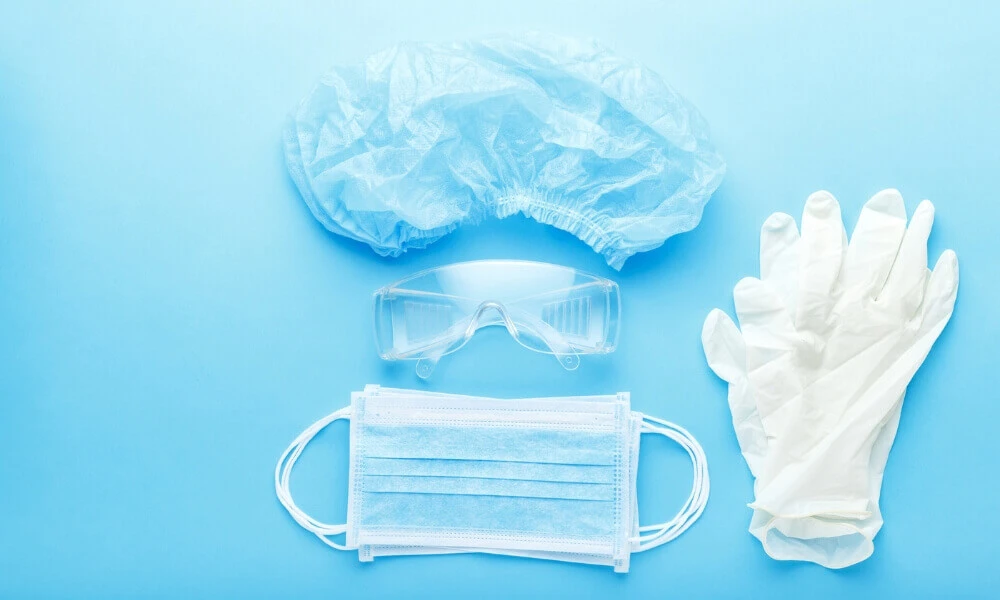In today’s rapidly evolving work environments, safety is paramount, whether on a bustling construction site, a high-tech laboratory, or the front lines of healthcare. Among many safety measures, one term frequently stands out: the Personal Protective Equipment (PPE) Kit. But what exactly is a PPE kit, and why is it so crucial across various industries?
A PPE kit is not a one-size-fits-all solution; it’s a customized gear assembly designed to protect individuals from specific hazards they might encounter in their workplace. From gloves that shield hands from harmful chemicals to respirators that filter out airborne contaminants, PPE items are as diverse as the professions that require them.
This blog post will explore the elements that make up a PPE kit, delving into each item’s unique features and applications. We’ll also discuss the overall benefits and purposes of PPE, shedding light on why this often overlooked aspect of occupational safety is so integral to the well-being of workers and the broader community. Whether you’re an employer looking to enhance workplace safety, an employee wanting to protect yourself, or simply curious about the world of occupational health, this guide to PPE kits will offer valuable insights.
What’s PPE Kit?
PPE, or Personal Protective Equipment, refers to the various types of protective clothing, helmets, goggles, and other garments or equipment designed to protect the wearer’s body from injury or infection. PPE is used in a variety of settings to ensure that employees and individuals are protected from hazards in their environment, especially in industries like healthcare, construction, and manufacturing.
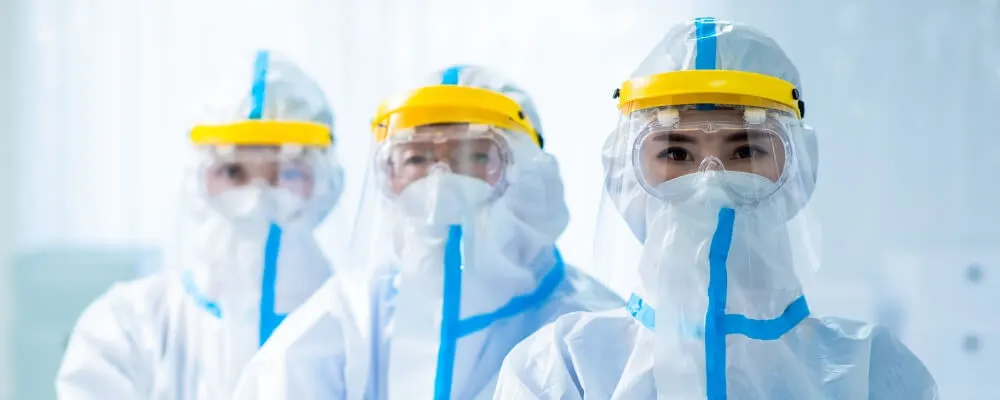
Benefits Of PPE Kit
Personal Protective Equipment (PPE) kits play a crucial role in ensuring the safety and well-being of individuals in various work environments. Here are some of the key benefits of using PPE kits:
- Reduction of Exposure to Hazards: PPE provides a barrier between the wearer and environmental hazards such as chemicals, biological agents, physical harm, or extreme weather conditions. This minimizes the risk of injury or illness.
- Compliance with Regulations: Many industries are regulated by governmental bodies that mandate using PPE to comply with safety standards. Utilizing PPE helps organizations meet these regulations and avoid legal penalties.
- Enhanced Productivity: Workers often feel more comfortable and secure in their working environment, knowing that safety measures are in place. This can lead to increased efficiency and productivity.
- Reduction in Occupational Injuries and Illnesses: PPE can significantly reduce work-related injuries and illnesses by minimizing exposure to harmful substances and dangerous conditions. This translates to fewer worker compensation claims and less time off due to injury.
- Protection of Sensitive Environments: In settings such as cleanrooms or laboratories, PPE protects the wearer and the environment from contamination, maintaining the integrity of products and experiments.
- Cost-Effective: Although there’s an initial investment in PPE, it is often more cost-effective in the long run. Treating injuries or dealing with regulatory fines can far exceed the initial cost of purchasing and maintaining proper PPE.
Different Items That Are Include In the PPE Kit
Personal Protective Equipment (PPE) kits play a crucial role in ensuring the safety and well-being of individuals in various work environments. Here are some of the key benefits of using PPE kits:
1. Gloves
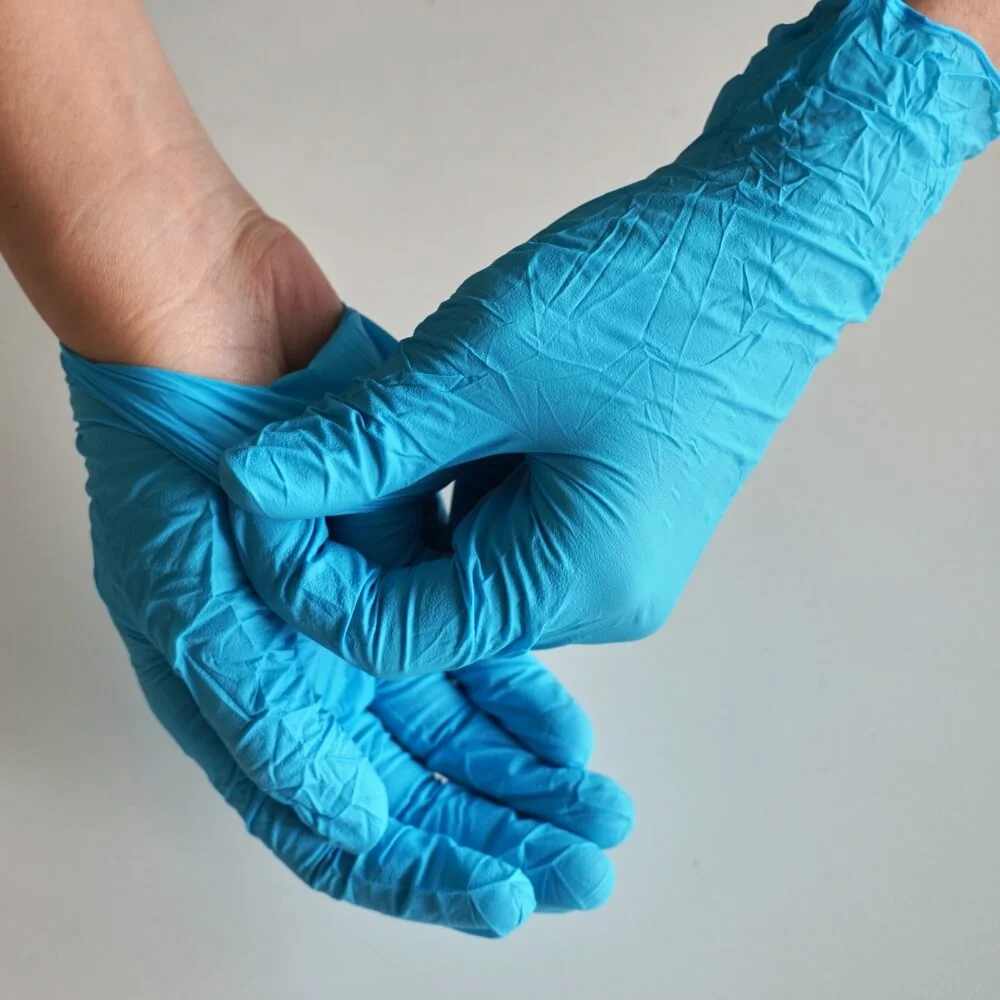
Gloves serve as a barrier between the skin and potential hazards. They can protect hands from exposure to harmful substances, including chemicals, biohazards, and extreme temperatures. There are different types of gloves for different types of work. For instance, gloves protect the wearer from blood, bodily fluids, and potentially infectious materials in healthcare settings.
In laboratories or industrial settings, chemical-resistant gloves might be used when handling hazardous materials. Insulated gloves are used in cold environments or when working with electricity. The type, material, and quality of gloves chosen should align with the specific hazards that may be encountered.
2. Face Masks
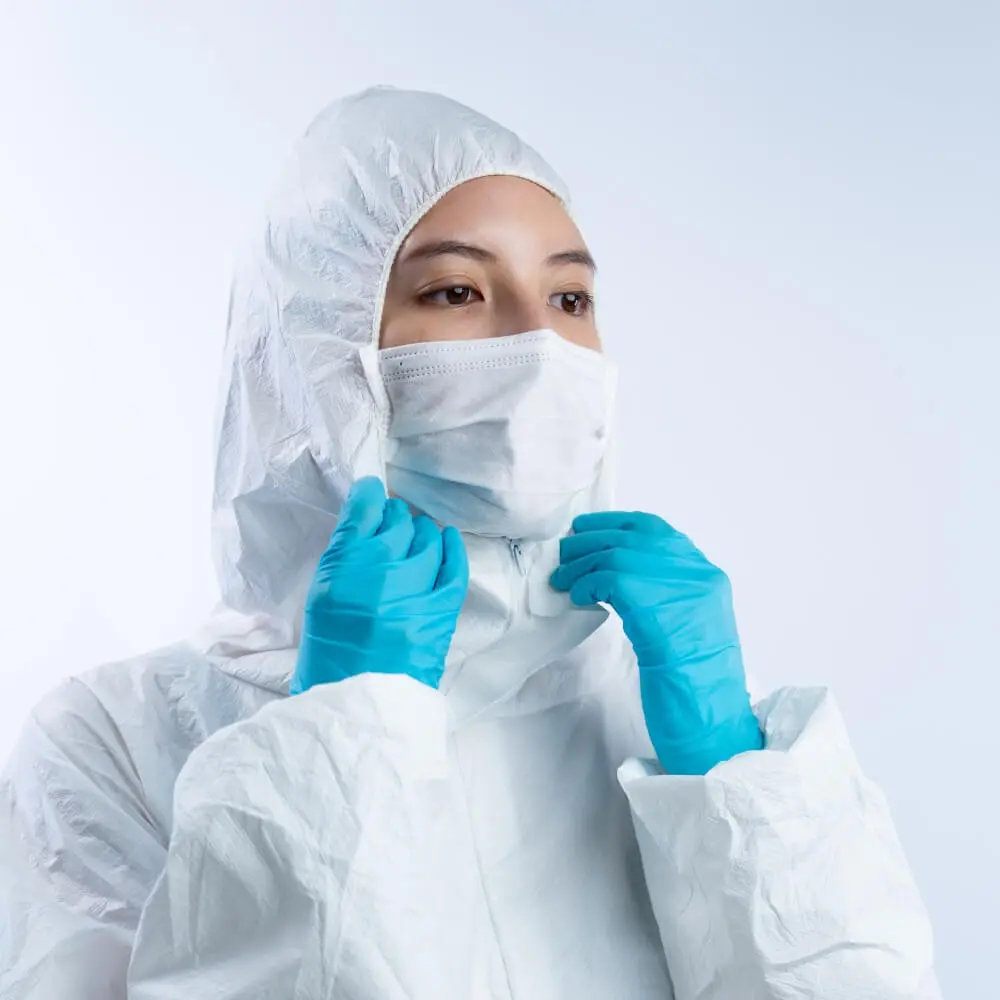
Masks protect the respiratory system from airborne particles, droplets, and certain fumes. Surgical masks primarily protect others from the wearer’s respiratory emissions, while N95 respirators protect the wearer from inhaling small particles, including airborne infectious agents. Masks should cover the nose and mouth fully. Respirators like N95 masks must also be properly fit-tested to ensure a tight seal against the face.
3. Face Shields or Goggles
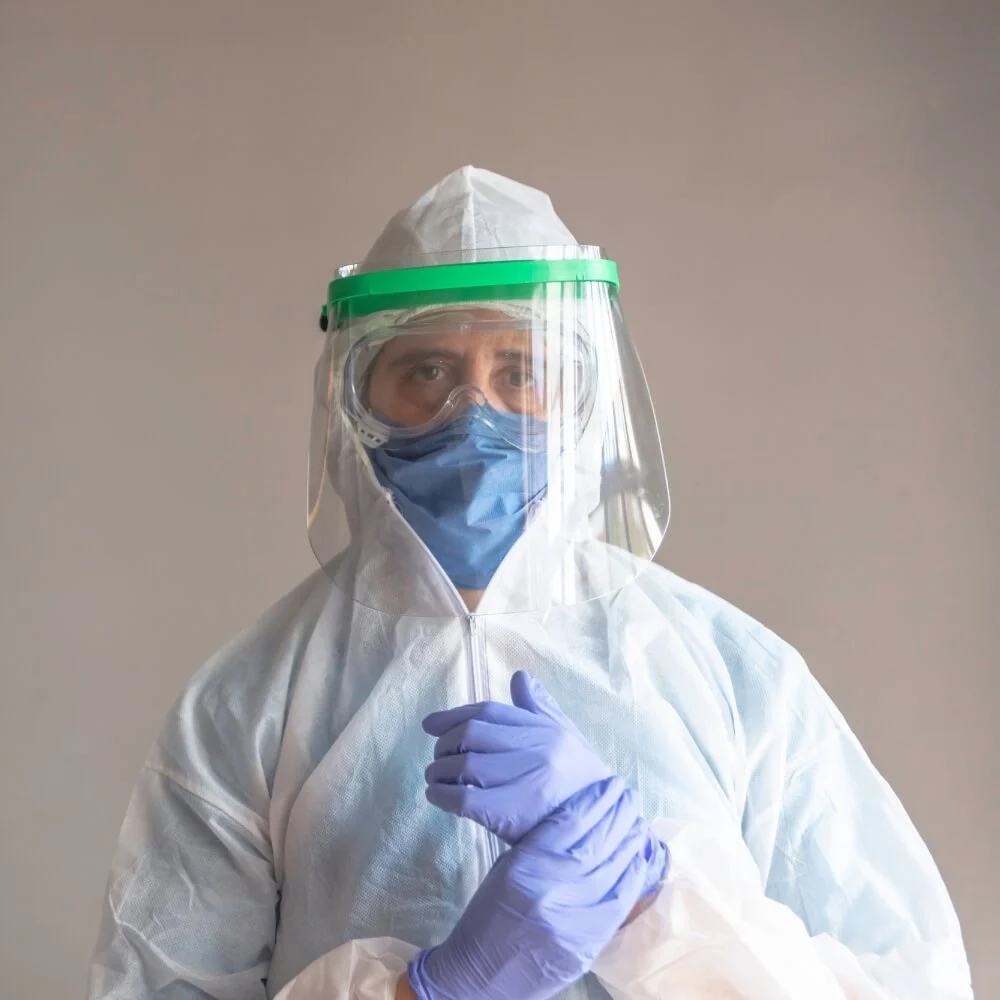
Face shields and goggles provide a physical barrier that protects the eyes and faces from potential hazards. Face shields are often used with masks or respirators to protect the face from splashes, sprays, or splatters of body fluids or hazardous materials. Goggles are designed to protect the eyes from specific hazards. They may be impact-resistant (for protection from flying debris), chemical splash-resistant, or specially designed for protection from radiation, including ultraviolet and infrared.
4. Gowns or Coveralls
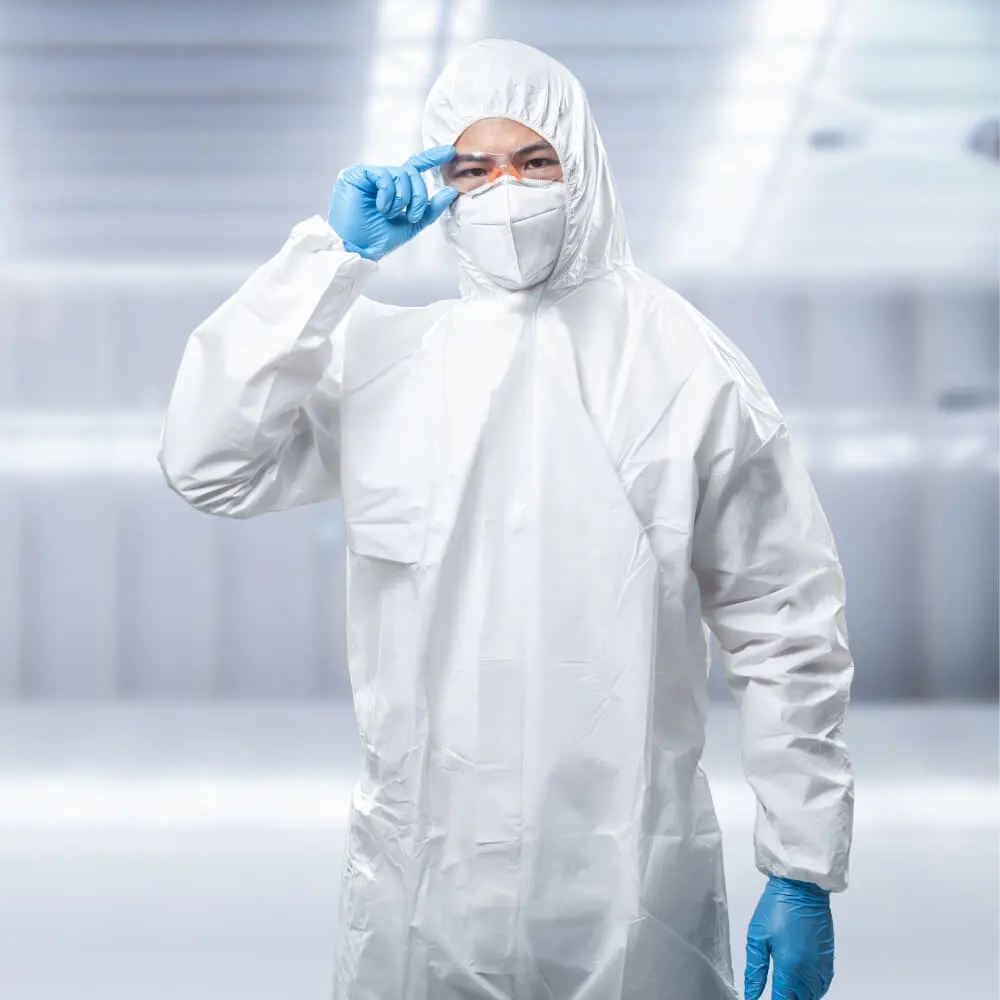
Protective gowns and coveralls are designed to protect the wearer’s body and clothing from contamination. In healthcare settings, they can prevent blood and bodily fluids from touching skin and clothing. In other environments, such as laboratories or industrial settings, they may provide protection from chemical splashes or harmful dust. These are generally made from impermeable materials and can be disposable or reusable, depending on the type and usage.
5. Hair Covers
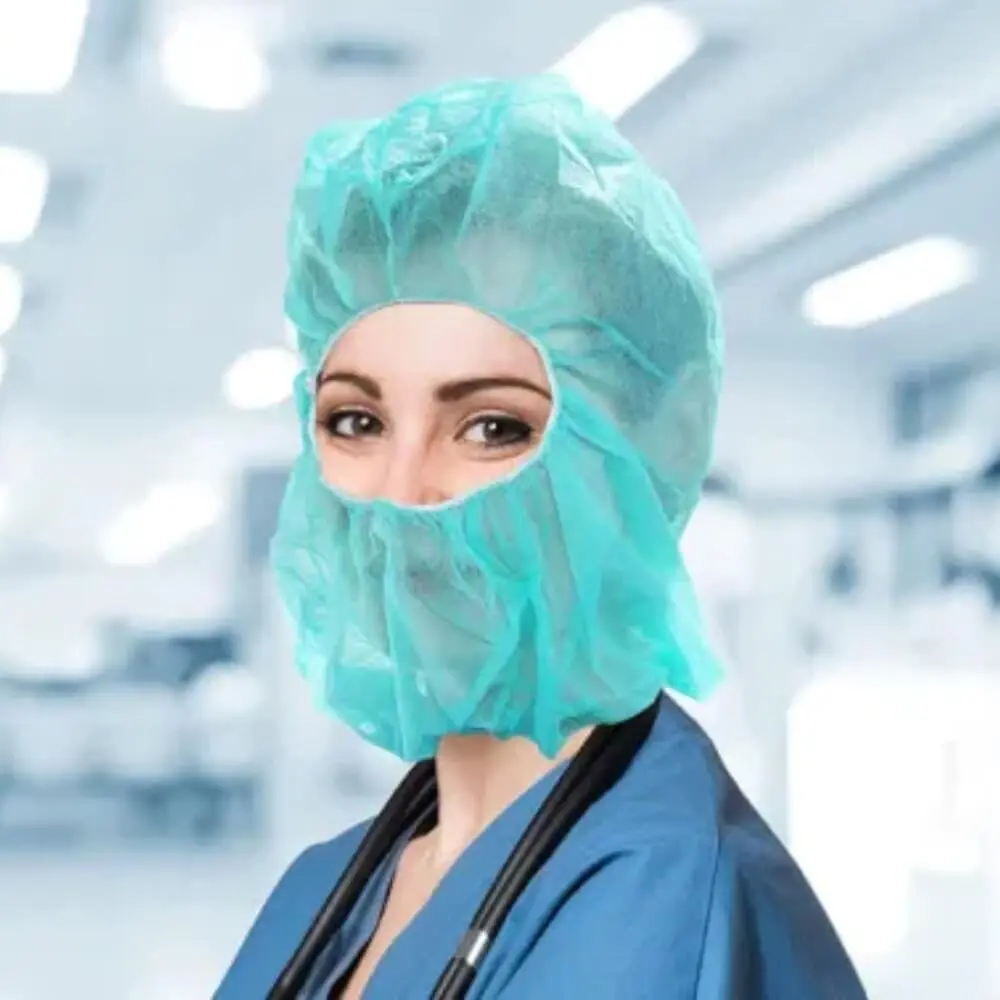
Hair covers, such as caps or hoods, are used to prevent the contamination of the work environment by loose hair and scalp materials. Hair covers can prevent foreign particles from falling into wounds, samples, or sensitive machinery in healthcare and laboratory settings. In addition, these can protect the wearer’s hair and head from harmful substances, spills, or splashes. Hair covers are usually lightweight, breathable material and designed to be easily put on and removed.
6. Shoe Covers or Booties
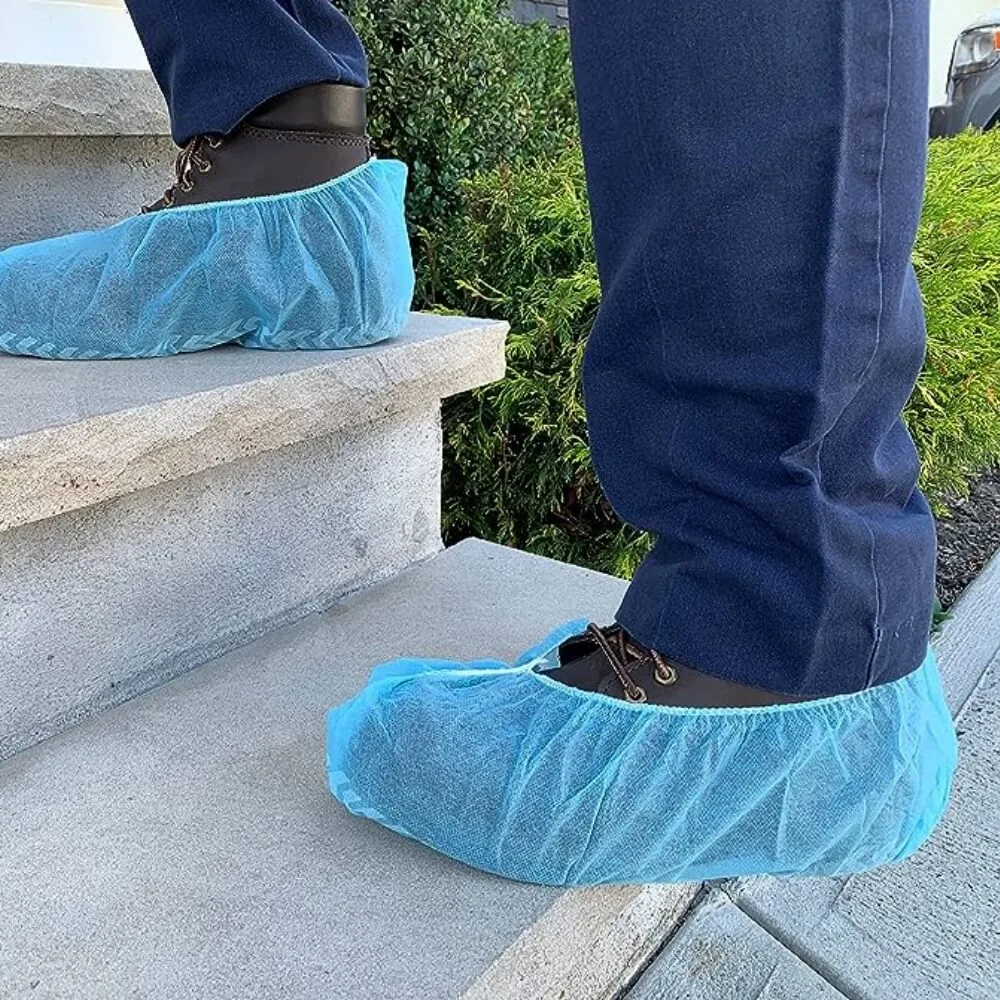
These are used to prevent floor contamination and keep harmful substances away from footwear. In healthcare and laboratory environments, shoe covers can minimize the spread of contaminants to other areas. They are typically made from disposable materials and are designed to fit over regular footwear. Special footwear might be necessary in some situations, such as steel-toed boots in construction or specialized boots for handling chemicals.
7. Hearing Protection
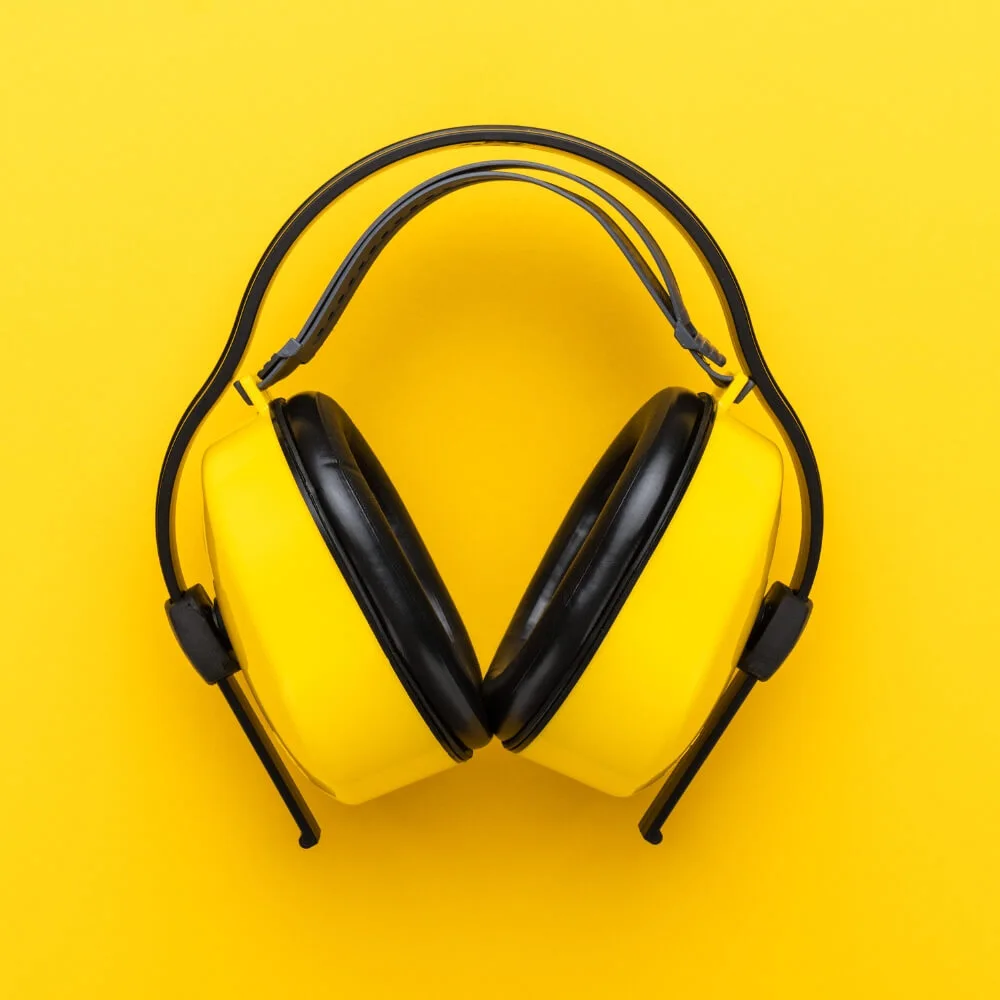
Hearing protection like earplugs or earmuffs is vital in environments where noise levels exceed safe limits. These reduce the noise exposure level and the risk of hearing loss. Earplugs are inserted into the ear canal, while earmuffs cover the outer ear. The choice between them depends on the level of noise reduction required, comfort, and personal preference. Regular testing and proper fitting are crucial to ensure effectiveness.
8. Respirators
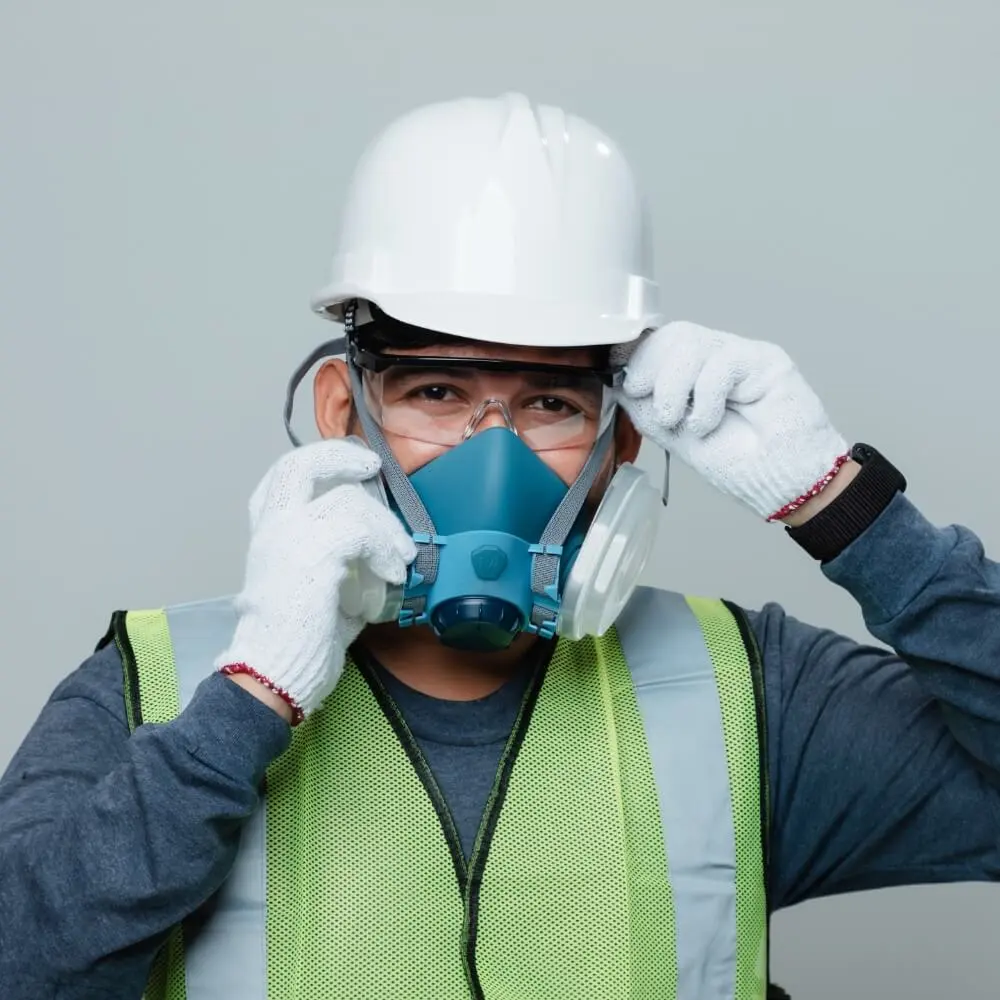
These specialized devices protect the wearer from inhaling hazardous substances, including gases, vapors, fumes, and airborne particles. Respirators are more advanced than regular masks and usually come in two main types: air-purifying respirators, which filter airborne contaminants, and supplied-air respirators, which provide clean air from an external source. Proper fit testing, training, and maintenance are necessary for these devices to function effectively.
9. Aprons

Aprons provide an additional layer of protection, particularly for the front of the body. They are commonly used in healthcare, laboratory, food preparation, and industrial settings. Aprons may be waterproof or resistant to chemicals, depending on the particular need, and they can be easily removed if contamination occurs.
10. Full Body Suits
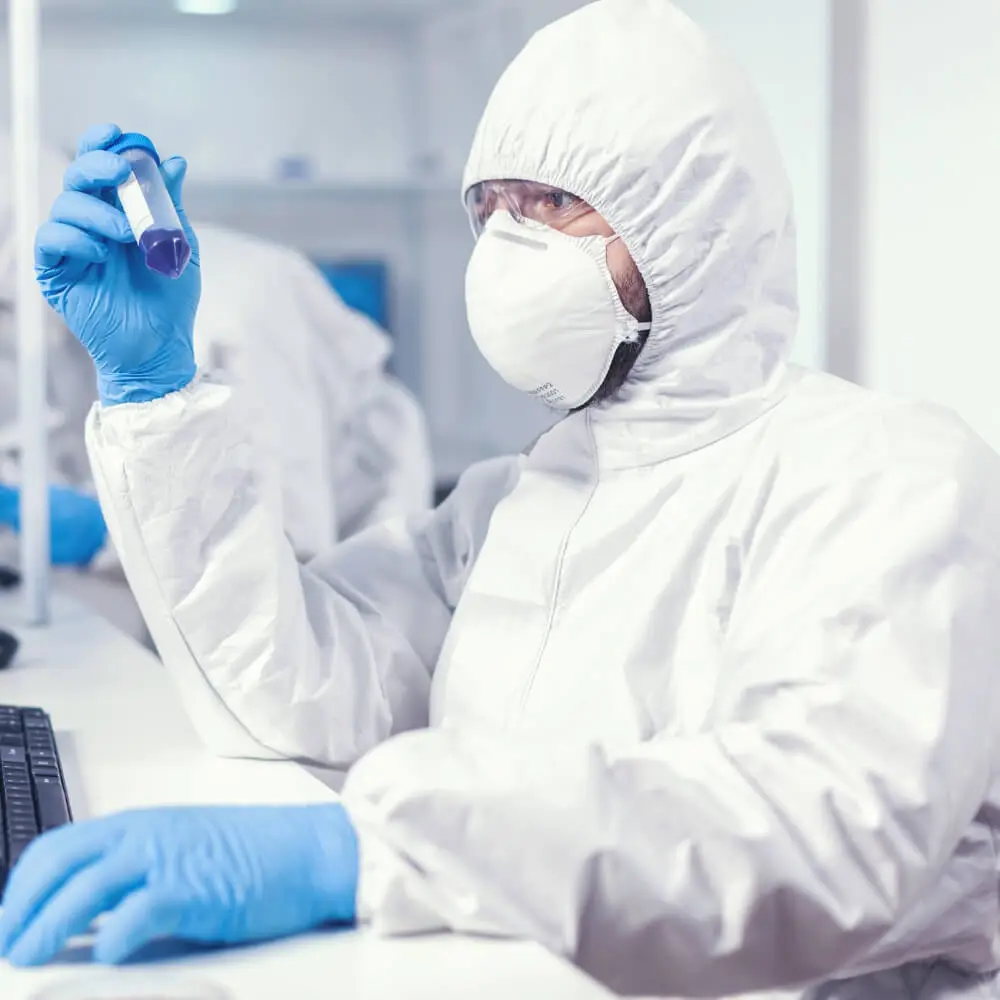
In extreme cases, such as handling highly hazardous chemicals or working in biosafety level-4 laboratories, might require full-body suits. These suits provide complete coverage and are typically air-tight, often with their own breathing apparatus. The suits are designed to be impermeable to the specific hazard, requiring specialized training.
11. Fall Protection
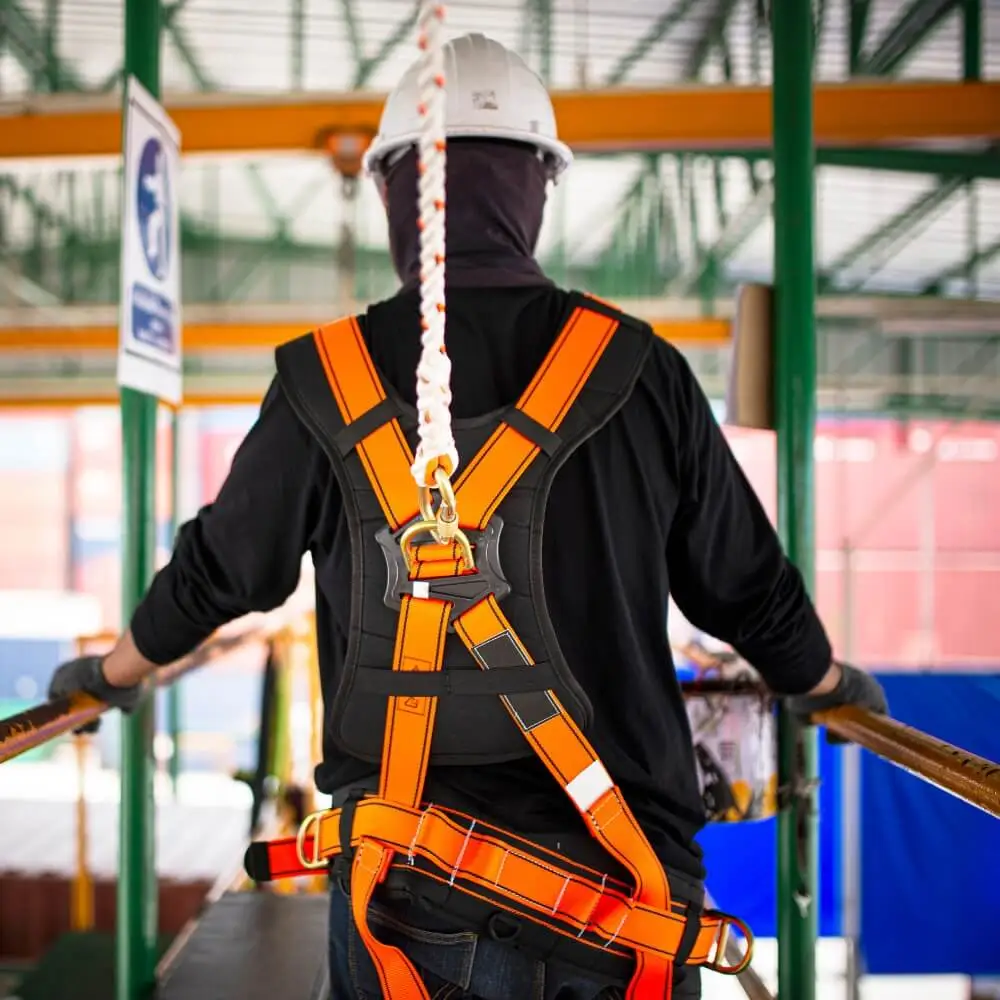
For workers at height, such as in the construction or maintenance of tall structures, fall protection equipment like harnesses, lanyards, and anchor points is essential. These devices are designed to stop or safely arrest a fall if it occurs. Regular inspection, proper fitting, and training are key to ensuring the effectiveness of fall protection equipment.
12. Thermal Protection
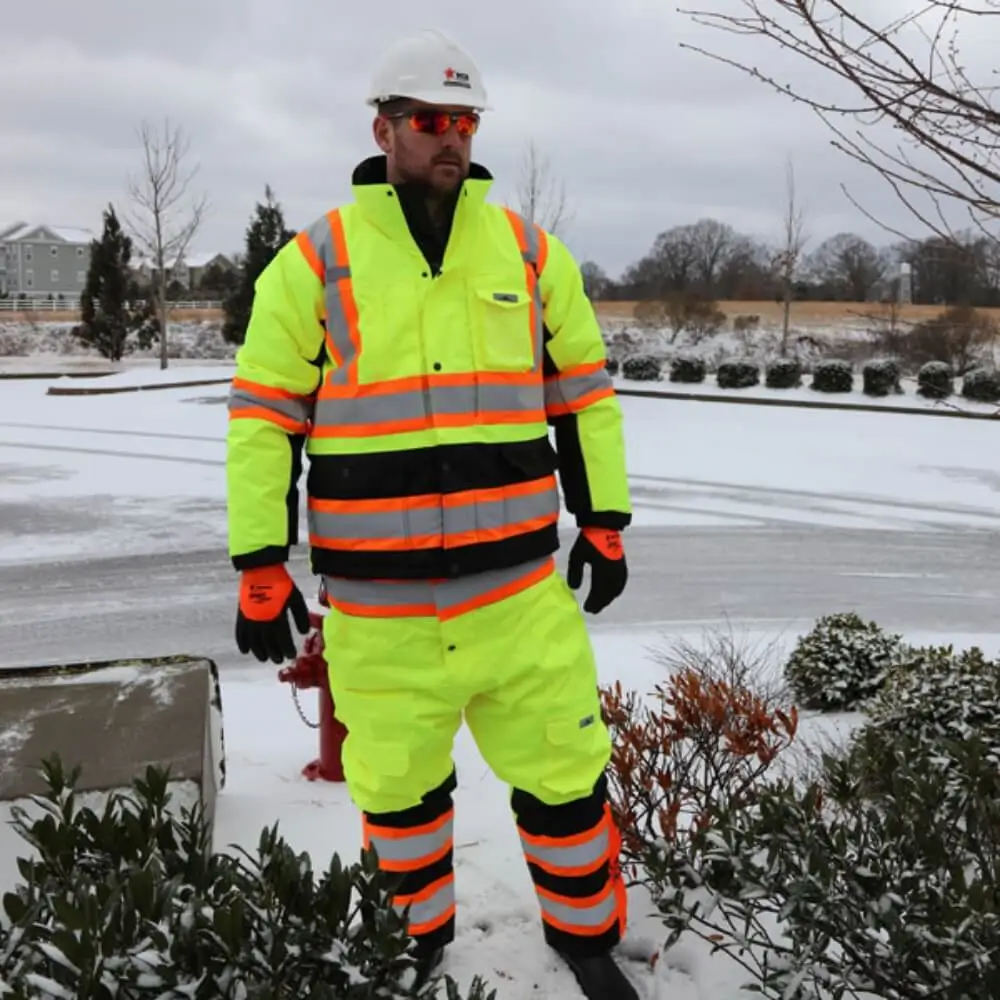
Special PPE is needed to protect against temperature-related risks in environments with extreme heat or cold. This might include insulated gloves, hats, jackets, and other garments designed to maintain body temperature. Thermal protection can also refer to protection from burns in environments with open flames or hot surfaces. Materials may be flame-resistant or specially designed to reflect or absorb heat.
The proper selection, use, and maintenance of PPE are essential in each case. This requires understanding the specific risks and needs of the environment and the tasks being performed. PPE is often one part of a broader safety system that includes engineering controls, administrative controls, and safe work practices. By integrating PPE into a comprehensive safety program, organizations can effectively protect workers and others in the environment.
What’s The Purpose Of a PPE Kit?
The purpose of a Personal Protective Equipment (PPE) kit is to provide an essential barrier that safeguards individuals against various potential hazards in their working environment. Here’s a more detailed look at the primary purposes of PPE kits:
- Protection Against Physical Hazards: PPE protects the wearer from physical risks such as cuts, punctures, fractures, abrasions, and electrical hazards. This is particularly important in industries like construction, manufacturing, or maintenance.
- Protection Against Chemical Hazards: In environments where harmful chemicals are handled, PPE like gloves, goggles, and specialized suits protect the skin, eyes, and respiratory system from exposure to toxic or corrosive substances.
- Protection Against Biological Hazards: In healthcare settings or laboratories, PPE helps in protecting against exposure to infectious agents such as viruses, bacteria, and other pathogens.
- Protection Against Environmental Hazards: PPE can also protect against environmental factors like excessive noise, extreme temperatures, or harmful radiation, ensuring that workers can perform their duties without risk of injury or long-term health effects.
- Prevention of Cross-Contamination: PPE like gloves, gowns, and masks can prevent the spread of contaminants from one area to another, particularly in sensitive environments like food processing or pharmaceutical manufacturing.
- Compliance with Regulations and Standards: Many occupations have specific legal requirements for safety, and PPE is often mandated to ensure these standards are met. Non-compliance can lead to legal penalties and reputational damage.
- Psychological Assurance: Knowing that safety measures are in place can boost confidence and morale among workers. Feeling safe often translates into higher productivity and job satisfaction.
- Preservation of Public Health: In public health crises, such as pandemics, PPE plays a vital role in controlling the spread of disease, protecting both healthcare workers and the public.
- Environmental Protection: Some PPE, such as containment suits, protects the environment by preventing the escape of contaminants from controlled settings.
- Economic Efficiency: Although there is an upfront cost to acquiring PPE, it often saves money in the long run by reducing the costs associated with workplace injuries, illnesses, and associated legal issues.
In essence, the purpose of a PPE kit is multifaceted, covering not only the physical protection of the individual wearing it but also contributing to broader goals like regulatory compliance, public health, and economic efficiency. The proper selection, use, and maintenance of PPE are crucial to fulfilling these purposes, as is training on how to use the equipment effectively.
Conclusion
Personal Protective Equipment (PPE) kits are a vital line of defense in safeguarding individuals from occupational hazards, from physical and chemical to biological and environmental risks. Comprising an array of specialized items such as gloves, masks, gowns, face shields, respirators, and more, each tailored to specific needs and working conditions, PPE kits contribute to individual safety and broader public health and regulatory compliance.
Understanding the elements within a PPE kit and their appropriate applications ensures that workplaces remain secure, healthy, and productive, reflecting a commitment to the well-being of workers and the community.

